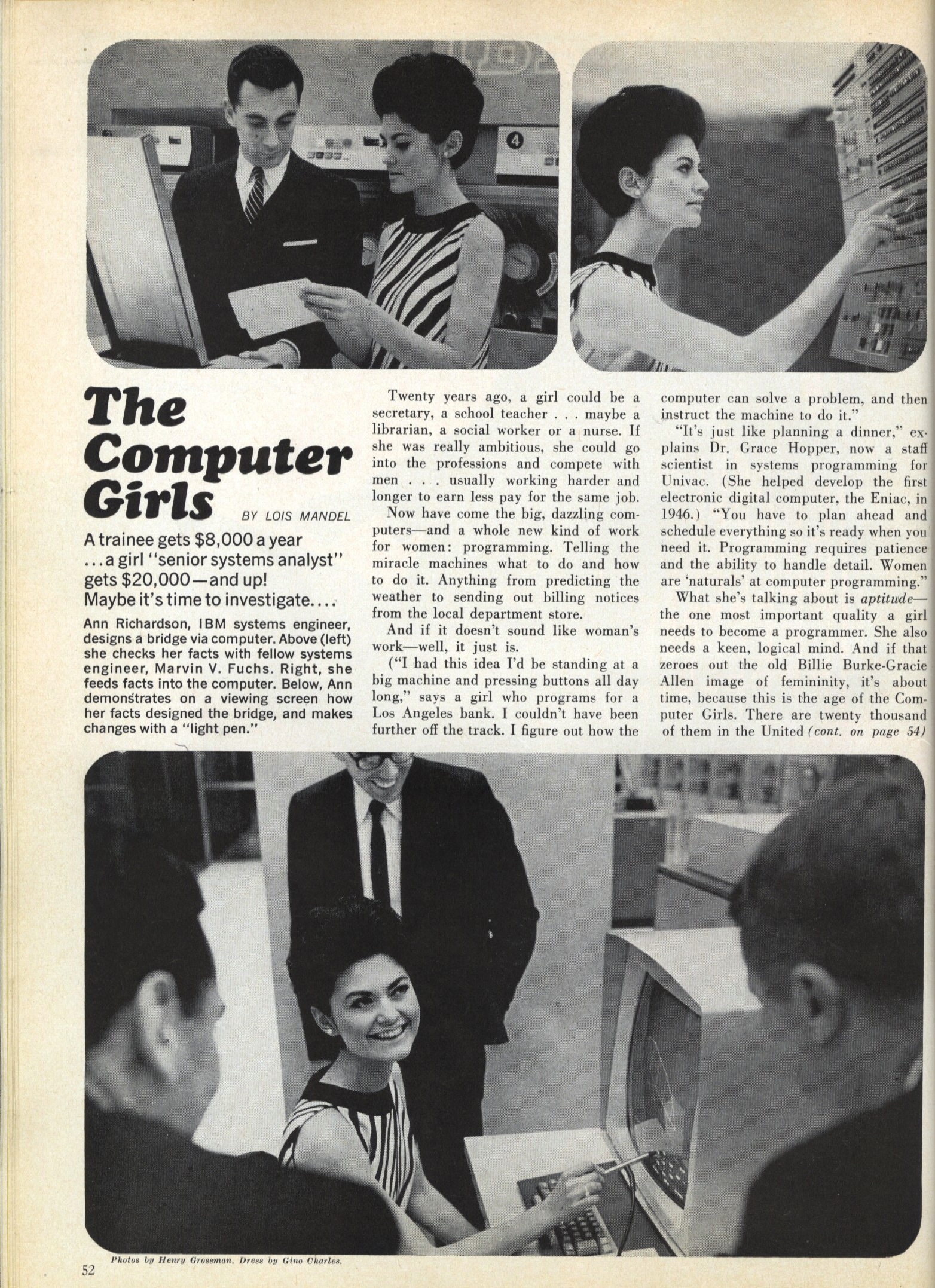Statistics related to Education and Business/Industry gender in the culture and era.
During the 1960’s many women faced discrimination both in education and the workplace. According to National Center for Education Statistics (2010), college enrollment of high school graduates consisted of 54% male and only 37% female. The National Center Education Statistics from the U.S. Department of Education (2004) reports only 75% of women obtained a four year degree but only 10% were seeking career oriented majors. These majors lead to advanced degrees and were S.T.E.M. fields. While Ivy League schools such as Princeton and Yale didn’t accept female students until 1969.
Women in the workforce statistics reflected the hardships and discrimination women faced in the workforce. Women earned 61 cents per dollar of what a man earned. While reports from the U.S. Census Bureau (2008) during the 1960’s states only 14.8 million were full time year-round workers. Of these women it’s revealed there was a $13,000 difference between median earnings of year-round full time workers. The amount men earned was an average of $34,000 while women earned only $20,600 (projected in 2009 dollar). During this time women only held less than 15% of management positions and less than 6% of women held a bachelor’s degree.
How have the numbers changed and what was their influence?
July 2nd, 1964 the Civil Rights Act (2016) was nationally televised by President John F. Kennedy. The act ended segregation in public places and banned employment discrimination based on sex, religion, race, color, or national origin. Women who were pregnant no longer feared of being fired nor did they fear of not being hired because they had young children. “Male only” job notices became illegal. This act opened many doors for women seeking careers in STEM fields. Computer programmer job ads were advertised in Cosmopolitan; a popular magazine targeted to females.
During the late 1960’s women began enrolling in male dominant majors. These majors were career oriented and led more women to advanced degrees. Of the many reasons for the female progressive change was: fewer women married young and less started families at a young age. In a PBS’s article (2015) “People & Events: The Pill and the Sexual Revolution” claims the birth control pill was a major part of the feminist movement “Women started challenging their exclusion from politics and the workplace. They also began to question traditional sexual roles.”
Influence of her technology on the future.
Liskov’s technology paved the way for modern day software. Her design for a first high-level distributed programming language. Her CLU language is a forerunner of modern object oriented; Argus. Her research was the basis for modern programming languages which include Java, C++, and C#. Liskov’s research has contributed to a method used to organize complex programs through a data abstraction. She received the Alan Turing award for her work of the Association for Computing Machinery.


